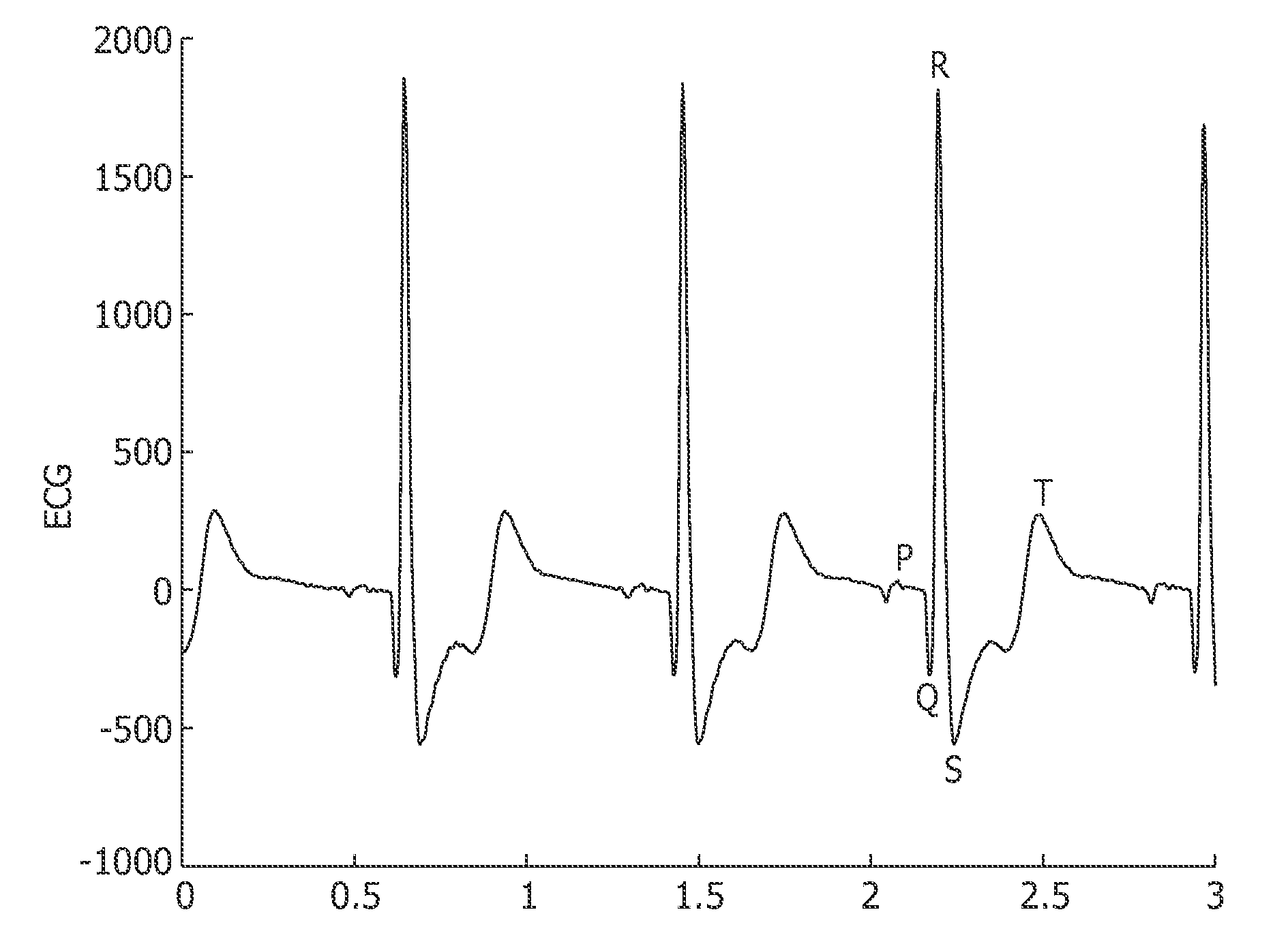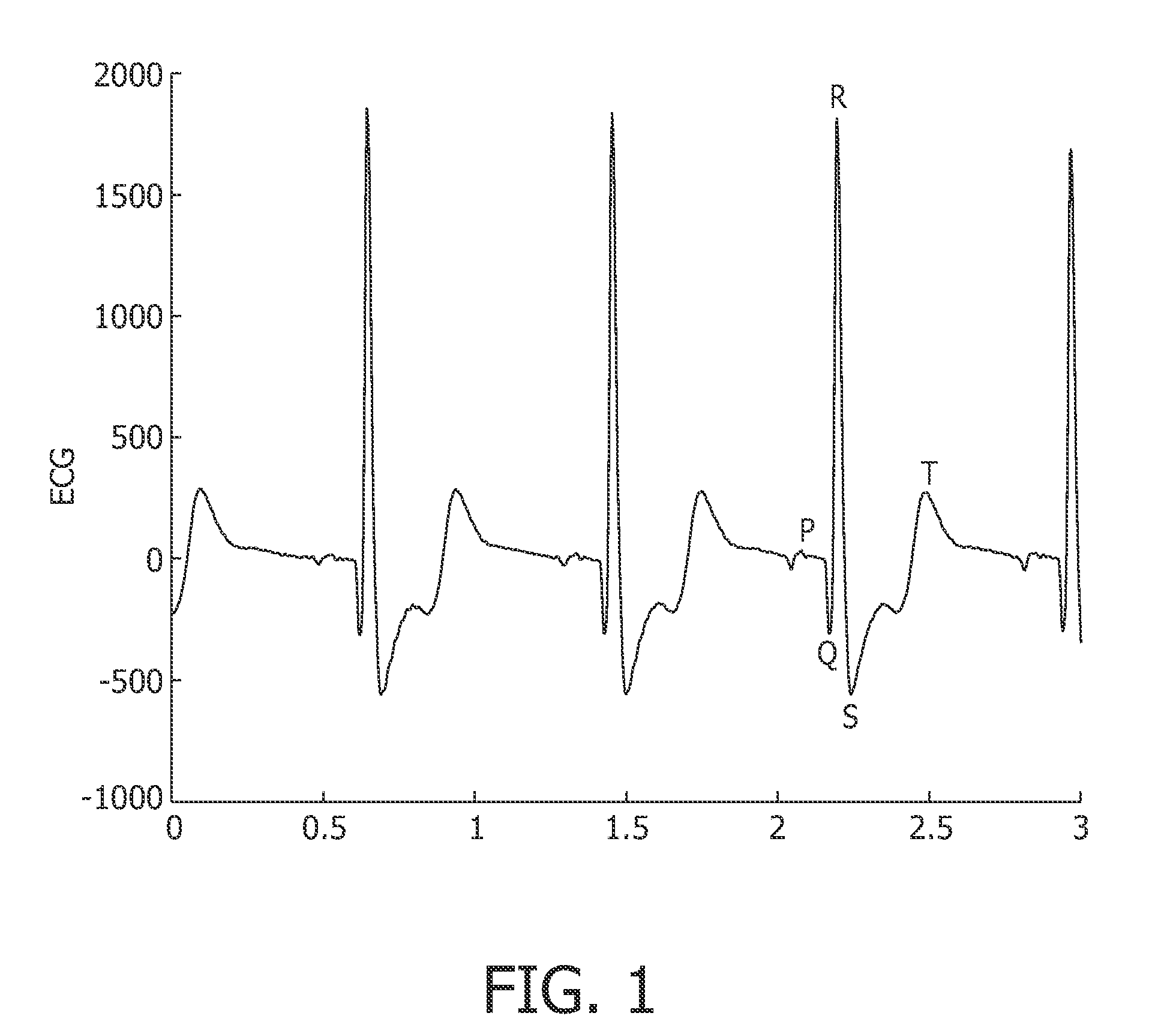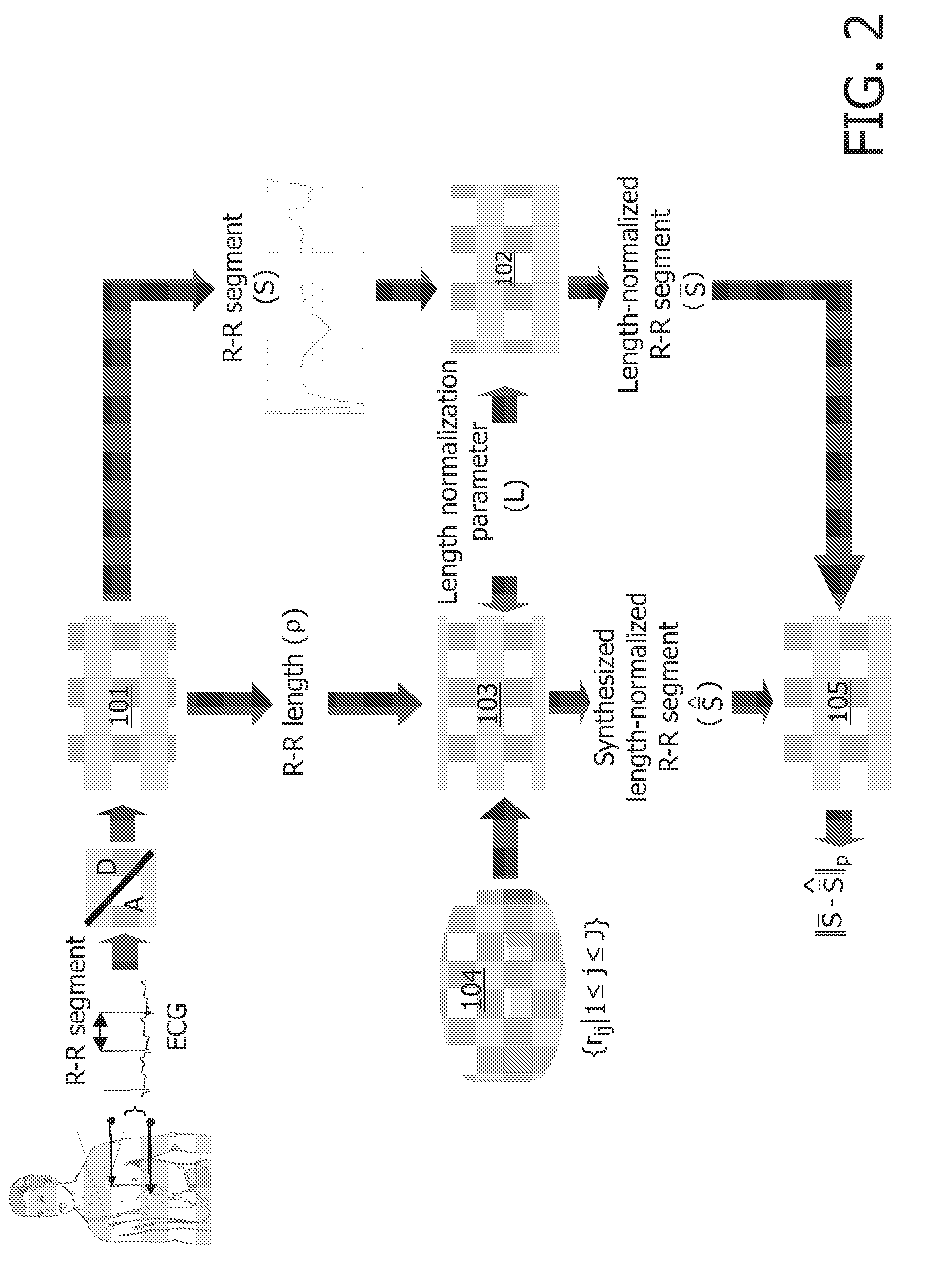Template synthesis for ecg/ppg based biometrics
a biometric and template technology, applied in the field of verification of the identity of individuals, can solve the problems of inability to create such an exhaustive set of features, inability to precisely determine the peak of the pqrst in an automated way, and uncertainty in the determination of the location
- Summary
- Abstract
- Description
- Claims
- Application Information
AI Technical Summary
Benefits of technology
Problems solved by technology
Method used
Image
Examples
Embodiment Construction
[0028]FIG. 1 shows an illustration of a recorded ECG, where a so called PQRST cycle has been indicated. As previously has been discussed, characteristics of PQRST cycles can be employed for extracting feature sets, or biometric templates, of an individual. Rather than determining the location of peaks in the PQRST cycle, shape of R-R segments can be used for biometric identification.
[0029]FIG. 2 shows a system for verifying identity of an individual in accordance with an embodiment of the invention. In the system, a digitized ECG signal is segmented by segmentation block 101. From the R-R segment S, the actual length ρ of the segment is derived. The R-R segment S is length-normalized to contain L samples by normalization block 102. L is thus referred to as the normalization parameter. In FIG. 2, the length-normalized R-R segment is output by normalization block 102 and denoted S. The length normalization parameter L is further used as input together with the actual length ρ of the R...
PUM
 Login to View More
Login to View More Abstract
Description
Claims
Application Information
 Login to View More
Login to View More - R&D
- Intellectual Property
- Life Sciences
- Materials
- Tech Scout
- Unparalleled Data Quality
- Higher Quality Content
- 60% Fewer Hallucinations
Browse by: Latest US Patents, China's latest patents, Technical Efficacy Thesaurus, Application Domain, Technology Topic, Popular Technical Reports.
© 2025 PatSnap. All rights reserved.Legal|Privacy policy|Modern Slavery Act Transparency Statement|Sitemap|About US| Contact US: help@patsnap.com



